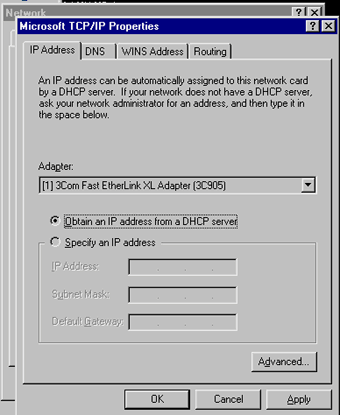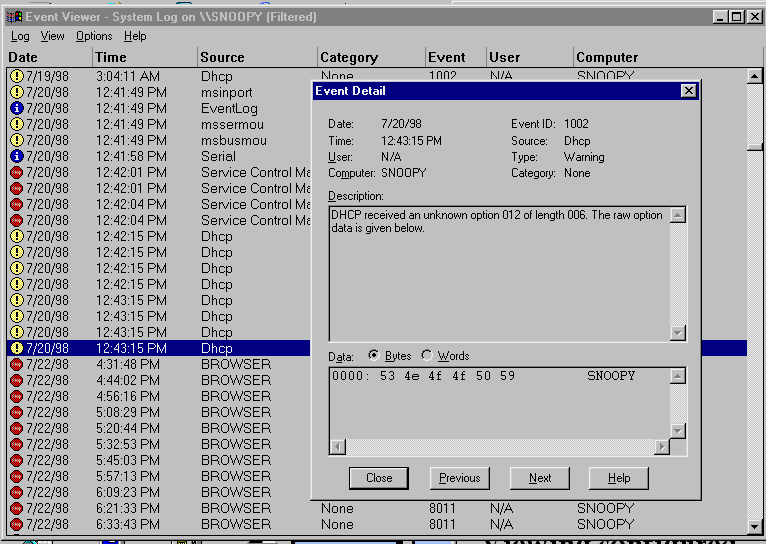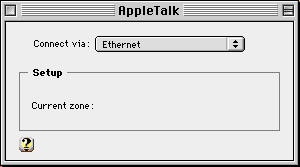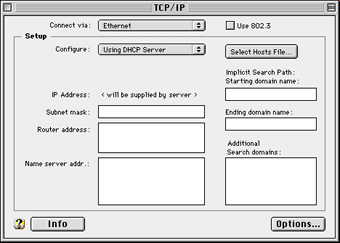Configuring DHCP
If you're installing DHCP for the first time, NT will ask you if you want to use
DHCP on the workstation. Reply Yes to this prompt (the default answer is No) and
NT will walk you through the DHCP configuration process.
If you've already installed the TCP/IP protocol, select it and click the
Properties button to make sure the Obtain an IP Address From a DHCP Server radio
button is selected, as shown in Figure C. When you restart your workstation, it
will automatically find and connect to your DHCP server. If the workstation
can't find a server, it will display an error message about certain services
being unavailable at startup.

Figure C Select Obtain an IP Address From a DHCP Server to
use DHCP on your Windows NT workstation.
If any errors occur, you can use NT's Event Viewer to get detailed information
about them. To do so, select Start>Programs>Administrative Tools (Common)
and open Event Viewer. Scroll through the list of error messages that your
workstation encountered during startup and look for DHCP under the Source
heading. If you double-click this entry, yousee an error description similar to
the one shown in Figure D. You can view DHCP errors on NT using Event Viewer.
Installing DHCP on the Macintosh Configuring DHCP on a Macintosh client is
relatively easy,

Figure D
but the process isn't like the one you use in the Windows environment. First,
you need to make sure you've set the correct interface in the AppleTalk Control
Panel.
To begin, open Control Panels from the Apple menu and choose AppleTalk. To use
DHCP, you must select Ethernet in the Connect Via dropdown list, as shown in
Figure E.

Figure E To use DHCP, your Macintosh must be set up to use
Ethernet.
Next, open the TCP/IP Control Panel, where the Edit menu offers you the options
of editing TCP/IP in Basic, Advanced, or Administration mode. Each mode acts a
little differently, but you must select Using DHCP Server from the Con-figure
dropdown list, as shown in Figure F, no matter which mode you use.

Figure F Select Using DHCP Server to allow your Mac to use
DHCP.






